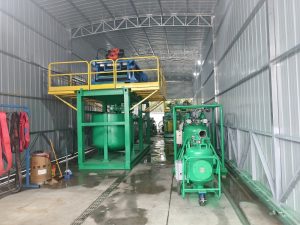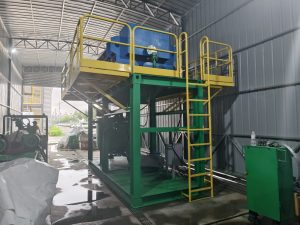When choosing separation equipment, real-world performance matters more than datasheets. To support evidence-based selection, our new material separation test workshop is now completed and ready for customer trials. The facility brings together five dedicated test modules designed to mirror the operational challenges found in mining, drilling fluids management, and slurry handling. Whether you send representative samples to our lab or prefer on-site trials at your location, the goal is the same: confirm process outcomes, quantify performance, and de-risk your investment before scaling up.


What’s inside the workshop
- Mining Vibrating Screen Test Module
This station evaluates screening behavior for ores, tailings, and mineral slurries. We can vary feed density, particle size distribution, and screen aperture to map cut points and throughput. Results typically include mass balance, screen efficiency, moisture of oversize/undersize, and blinding tendency under different conditions. - Drilling Shale Shaker Test Module
For drilling fluids, the shaker test module helps assess solids removal efficiency across API screen sizes, fluid rheology changes, and deck motion parameters. We record fluid loss, screen life indications, and the effect on downstream centrifugation requirements—useful for optimizing screen selection and solids control strategy. - Decanter Centrifuge Test Module
Here we quantify separation under controlled G-force, differential speed, and feed rate. We measure centrate clarity, cake dryness, torque trends, and polymer (if any) consumption. The outcome is a performance envelope that links solids loading to achievable cut size and energy use. - Combined Separation Module (Shaker + Centrifuge)
Many processes benefit from staged separation. This module allows us to test upstream screening followed by centrifugation, validating how primary cut removal improves centrifuge efficiency, reduces wear, and lowers power and chemical demand. We document the combined mass balance and incremental gains. - Solids Vacuum Pump Test Module
For viscous, abrasive, or high-solids slurries, pneumatic vacuum pumps can be decisive. This station profiles suction lift, transfer distance, and cycle frequency versus material properties, helping determine the practical limits for remote or confined transfer tasks.
How the trials work
Customers may ship samples (with MSDS and handling instructions) for controlled laboratory testing, or request field trials at their sites when scale or logistics make in-house testing impractical. Before any test, we align on objectives: target cut size, clarity, moisture, throughput, footprint, and power constraints. We then design the matrix—screen sizes, rotational speeds, feed densities—and run iterative trials to reach a robust operating window.

Deliverables you can act on
We provide a concise report with:
- Feed characterization: PSD curves, solids content, rheology notes.
- Operating setpoints and corresponding KPIs (yield, clarity, cake dryness, energy, wear indications).
- Recommended equipment configuration and scale-up guidance.
- Observations on maintenance, safety, and consumables.
This workshop is not about selling a model—it is about reducing uncertainty. With transparent data and repeatable methods, you can select equipment with confidence and document the basis for your decision.
If you would like to schedule a sample-based test or an on-site trial, let us know your objectives and constraints. We’ll propose a test plan that focuses on measurable outcomes and practical recommendations.